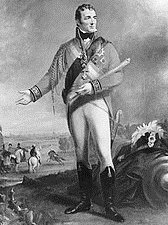» posted on Monday, July 18th, 2022 by Linda Lou Burton
Wearing Your Wellies
 Originally Published July 21, 2020 by Linda Lou Burton posting about Wellington, New Zealand from Little Rock, Arkansas – Light rain in Wellington today, with a high of 52. I don’t mind the rain. I learned how to enjoy a misty day living in Seattle, it doesn’t even slow you down. I’m settled in one time zone and one season for now; so I imagine Wellingtonians walking in the rain today, water drops splatting as their boots come down. Is there anything more fun than splashing in a puddle? It’s irresistible, especially when you’re wearing your rubber-ducky yellow. Wellies in Wellington, time for a story.
Originally Published July 21, 2020 by Linda Lou Burton posting about Wellington, New Zealand from Little Rock, Arkansas – Light rain in Wellington today, with a high of 52. I don’t mind the rain. I learned how to enjoy a misty day living in Seattle, it doesn’t even slow you down. I’m settled in one time zone and one season for now; so I imagine Wellingtonians walking in the rain today, water drops splatting as their boots come down. Is there anything more fun than splashing in a puddle? It’s irresistible, especially when you’re wearing your rubber-ducky yellow. Wellies in Wellington, time for a story.
 The city of Wellington, New Zealand was named in honor of Arthur Wellesley, the first Duke of Wellington; a title that comes from the town of Wellington in England. Now, the Duke was a popular fellow, having won the Battle of Waterloo in 1815, and when the original settlers of the New Zealand Company sat down in 1840 to name their new colony, the Duke’s name popped to the top. He was a supporter of the principles of “colonization.”
The city of Wellington, New Zealand was named in honor of Arthur Wellesley, the first Duke of Wellington; a title that comes from the town of Wellington in England. Now, the Duke was a popular fellow, having won the Battle of Waterloo in 1815, and when the original settlers of the New Zealand Company sat down in 1840 to name their new colony, the Duke’s name popped to the top. He was a supporter of the principles of “colonization.”
 But let’s go back to England for a moment. The Duke wasn’t just a war hero, he was also a bit of a fashion plate. Now “Hessian boots” were quite dandy-looking, high-cut and tasseled, but one day the Duke asked his shoemaker to modify the design a little, removing the trim, and cutting it to fit more closely around the leg. A good riding boot, but smart enough for evening wear, the style began to be called “the Wellington.” This soft leather boot became the main fashion for men of the British aristocracy through the mid 1800s.
But let’s go back to England for a moment. The Duke wasn’t just a war hero, he was also a bit of a fashion plate. Now “Hessian boots” were quite dandy-looking, high-cut and tasseled, but one day the Duke asked his shoemaker to modify the design a little, removing the trim, and cutting it to fit more closely around the leg. A good riding boot, but smart enough for evening wear, the style began to be called “the Wellington.” This soft leather boot became the main fashion for men of the British aristocracy through the mid 1800s.
Then along came Charles Goodyear, and vulcanization, and rubber boots. And a bit of re-branding. A “wellington-type” boot made of rubber was the perfect choice for farmers! Or anybody who had to work outdoors in the muck and the mire.
 Now for one more twist. The Kauri tree grows in New Zealand, a tree that oozes a resin from its bark and cones. This resin, or gum, builds up in the forks of the tree, drops to the ground, and over time as the tree falls and dies the littered wood and gum eventually get buried by soil or drowned in swamps. The Māori – the indigenous Polynesian people of New Zealand – had many uses for this gum. They chewed it fresh from the trees; they used it to start fires and make torches.
Now for one more twist. The Kauri tree grows in New Zealand, a tree that oozes a resin from its bark and cones. This resin, or gum, builds up in the forks of the tree, drops to the ground, and over time as the tree falls and dies the littered wood and gum eventually get buried by soil or drowned in swamps. The Māori – the indigenous Polynesian people of New Zealand – had many uses for this gum. They chewed it fresh from the trees; they used it to start fires and make torches.
Enter the Europeans, who saw the commercial benefits of Kauri gum. In the early 1840s a consignment was sent to London to make fire-kindlers and marine glue. But its real value was as an ingredient in varnish, and an industry was born. Māori and European settlers began digging the stuff out of the ground. Swampy, muddy ground. Boots were a good thing to keep your feet dry, natch?
Wellies! Gum Boots!
 The farming town of Talihape in the North Island claims the title “Gumboot Capital of the World” and has annual competitions and events. Most gumboots are black, though certain professions call for white, but kids, of course, wear boots of many colors. Like rubber-ducky yellow.
The farming town of Talihape in the North Island claims the title “Gumboot Capital of the World” and has annual competitions and events. Most gumboots are black, though certain professions call for white, but kids, of course, wear boots of many colors. Like rubber-ducky yellow.
Next rainy day when you pull out your Wellies, aka Gumboots, remember the Duke, the Māori, and Charles Goodyear. What an incredible round-the-world connection.
History is a fascinating thing.
